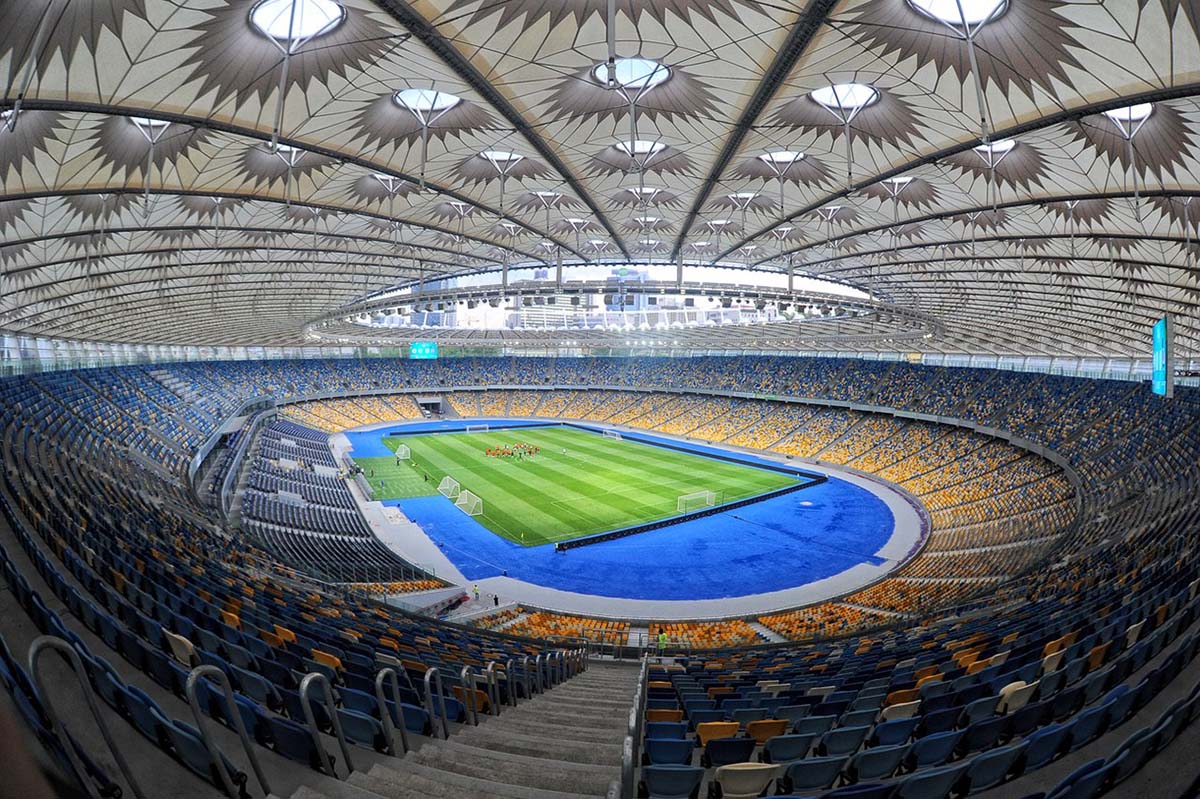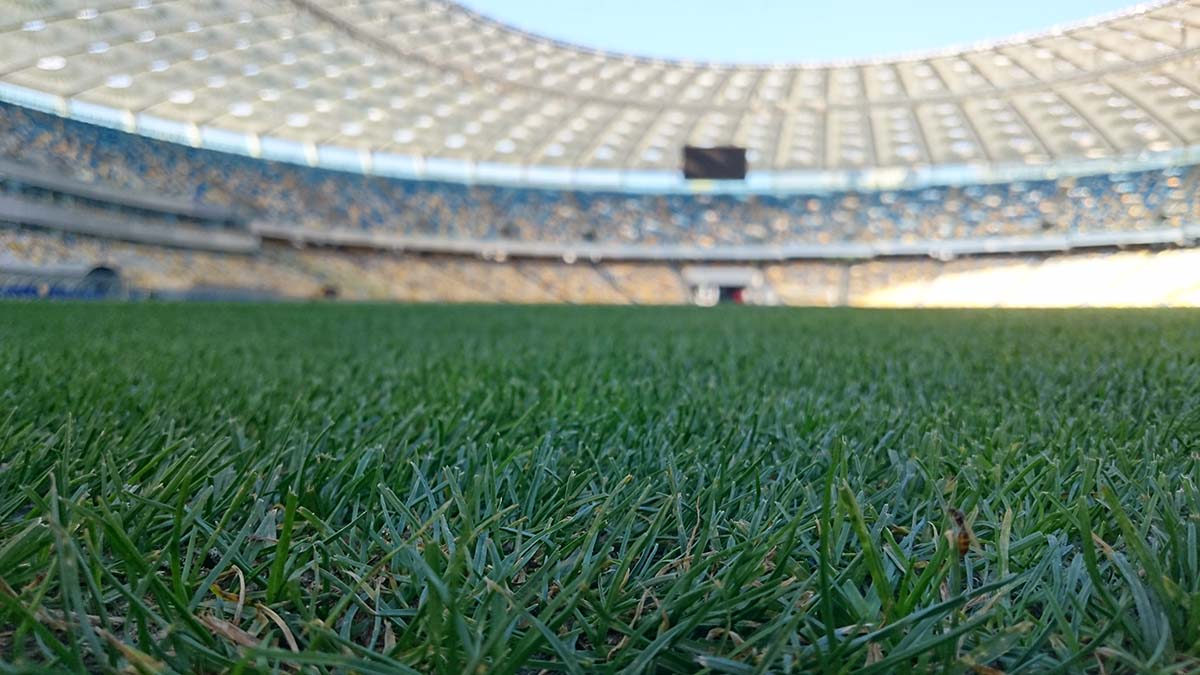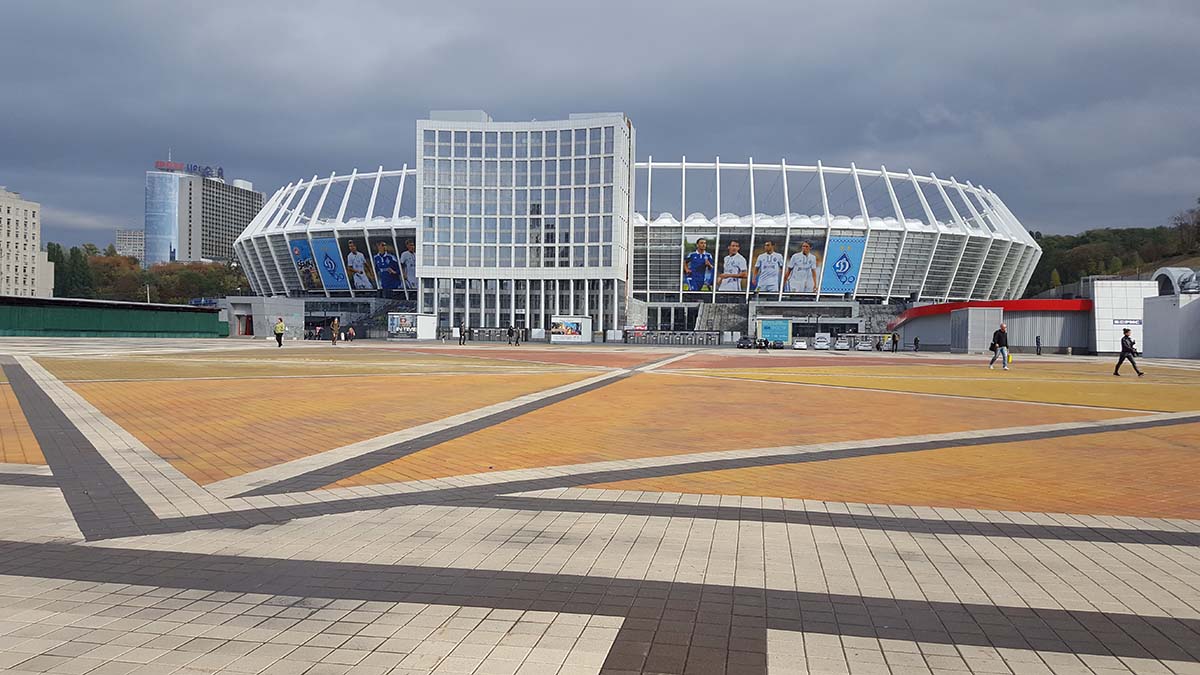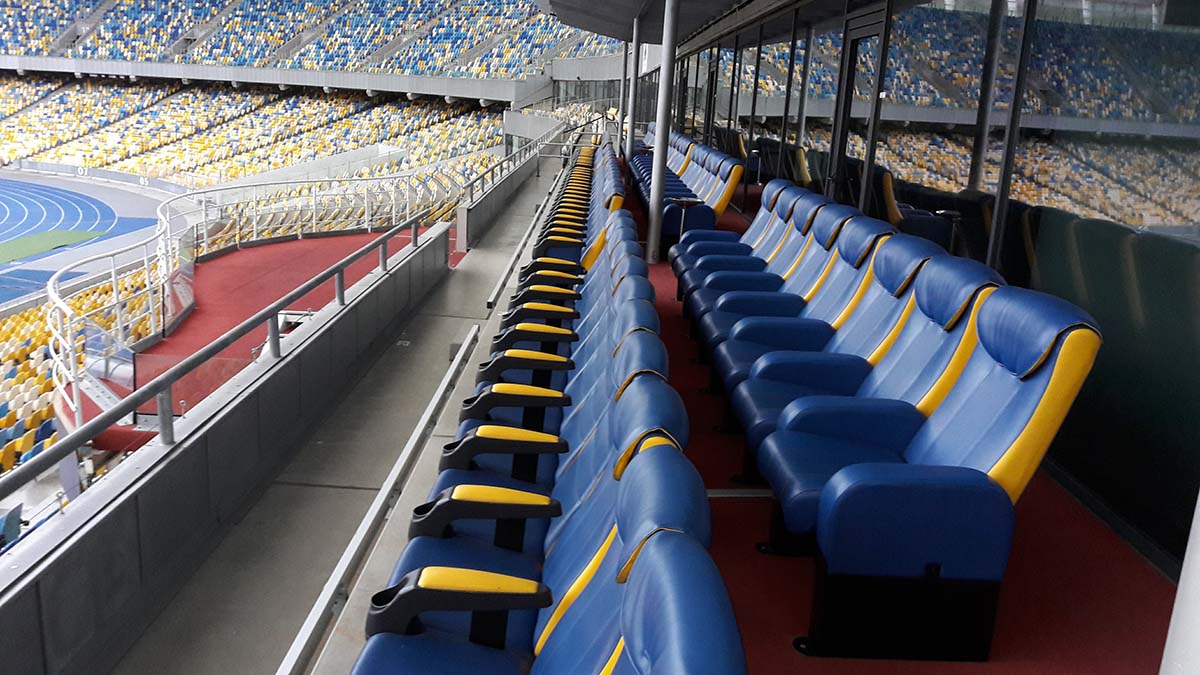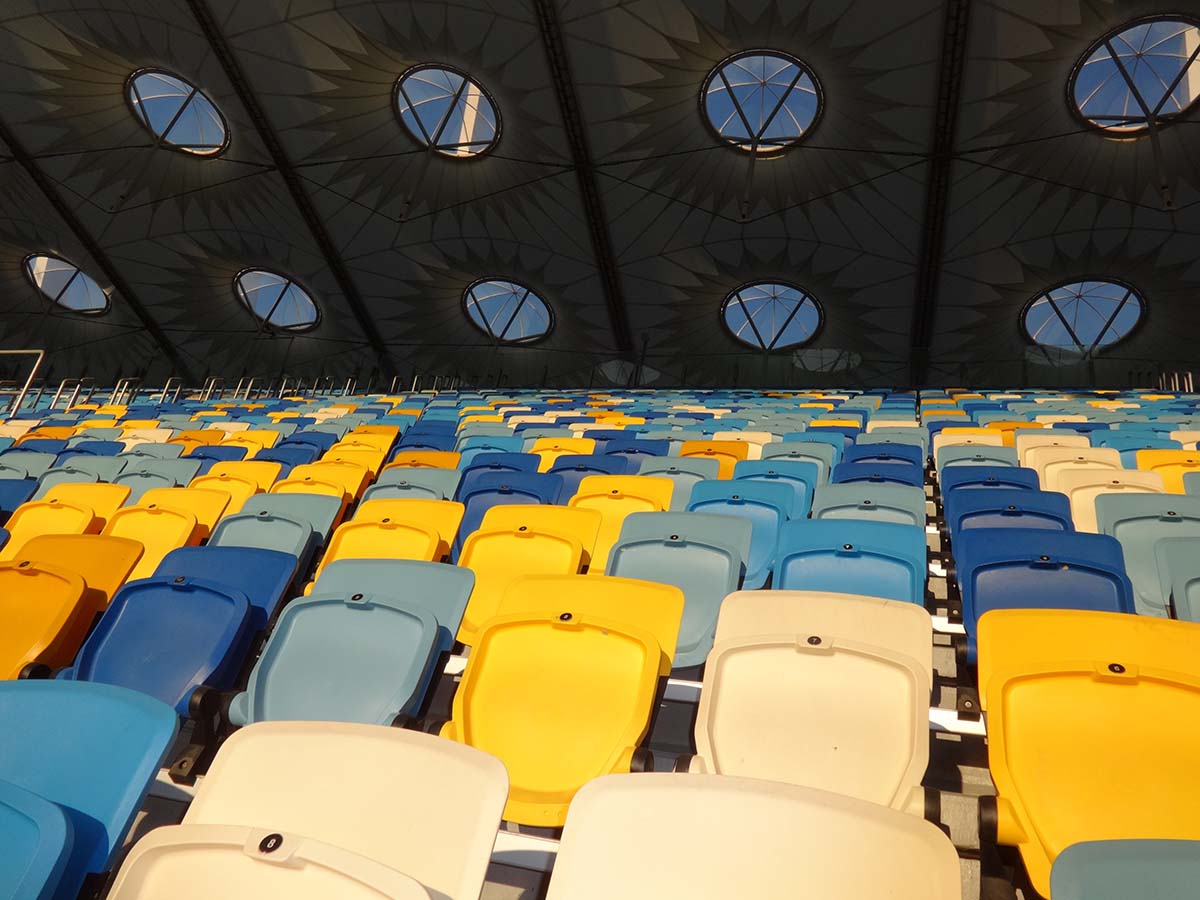The question of building a stadium in Kyiv arose back in 1914, but then the First World War prevented this. After the establishment of Soviet power in 1922, the Trotsky Red Stadium was erected on the site of Alekseevsky Park (which was practically destroyed during the revolution). The stadium was inaugurated on August 12, 1923. The project was developed by a young engineer L. Pilvinsky. The slopes of Cherepanovaya Mountain were used for the southern and eastern stands. After 11 years, Kyiv became the capital of the Ukrainian SSR, so the city needed a more spacious stadium. In 1936, reconstruction began. Based on the design of the architect Mikhail Grechina (he was also involved in the reconstruction of Dynamo Stadium and the design of the Sports Palace, Park Pobeda) the capacity of the new stadium was supposed to be 50,000 seats. The opening of the stadium, essentially rebuilt, was scheduled for June 22, 1941, but due to the war it took place only on July 12, 1942. In the opening match, the Kiev team “Rukh” defeated the team of the German military unit D-5, and the stadium itself, by decision of the city mayor, was officially renamed the All-Ukrainian Stadium.
In preparation for the celebration of the 50th anniversary of the October Revolution, a large-scale reconstruction was carried out in 1966-1967 – the 2nd tier of stands was completed at the football stadium. On the territory of the sports facility were built: an indoor hall for tennis, handball, volleyball, outdoor tennis courts, a field for athletics throwing, a ski jumping hill, an ice complex with an inflatable roof, and a training hill for ski jumping. The football stadium now had a capacity of 100,000 spectators. A reporting and commentary complex was built over the western stand.
In 1977-1980, another reconstruction was carried out in connection with preparations for the 1980 Olympic Games: a hard roof was installed on the ice complex, and a new cable-stayed ski jump with artificial turf was built, which made it possible to conduct training in the summer. At the football stadium, a cup for the Olympic flame was installed, the scoreboard was updated and new lighting poles of the original design were installed with a height of 82 meters and had 132 lamps with a power of 3.5 kW each. At the athletics core, the cinder track was replaced with a synthetic one. While the seating was updated, capacity was maintained at 100,062 seats and 4,000 press seats. At that time, the stadium, renovated for the Olympics, was one of the ten largest stadiums in Europe.
After the collapse of the USSR, market trade was carried out on the territory of the complex, and part of its territory was transferred to commercial structures. On May 12, 1996, the state enterprise “Republican Stadium” received national status and a new name “Olympic”. In order to bring it to modern international standards, another reconstruction of the stadium was carried out in 1998-1999: the stands were converted from bench-type seats to individual plastic seats (the capacity was reduced to 83,450 seats), the covering of the running tracks and sectors on the central core was replaced and partly on the warm-up field, heating was installed on the football field and the turf was renewed.
To prepare the stadium for EURO 2012, the sports complex needed to be reconstructed. Capacity was reduced to 70,050 seats by expanding sector aisles, VIP boxes, commentary, media and handicap accessible areas. A canopy of material was built over the stands, covering 100% of the seats. In addition, the slope of the lower sectors has been increased by 15% to maximize the visibility of the playing field. At the level of the upper sectors, along the perimeter of the stadium, a gallery was built, through which spectators can additionally exit from the second tier of stands. All sports facilities were dismantled and now the football stadium is the only operating sports facility in the entire territory of the complex. The renovated stadium was officially opened on October 8, 2011 and received the highest status from UEFA.
Construction work was carried out using the latest technologies and the best specialists. The Green Stadium eco-technology was used in the construction, which involves the use of recycled materials, a vacuum sewage system, which saves a large amount of water, and the use of European waste sorting practices. The stadium roof is made of heavy-duty material that can withstand temperatures up to 260⁰C and is also self-cleaning. The design includes transparent domes – umbrellas that better provide illumination of the arena and transmit sunlight to the lawn. The lawn required 800 rolls of grass, which were brought from Slovakia in 10 trucks with refrigerated chambers – it took more than 2 years to grow it. All seats in the stadium are made of high-quality fire-resistant material – similar seats are installed in stadiums “Wembley” and “Olympic” in London. In total, the stadium has six types of seats: standard, seats for the blind with additional equipment, seats for VIPs and business sectors, seats for people with special needs and persons accompanying them, and seats for players. The color scheme of the chairs is made in patriotic blue and yellow colors.
Where is the Olympic National Sports Complex located?
Bolshaya Vasylkivska street, 55
